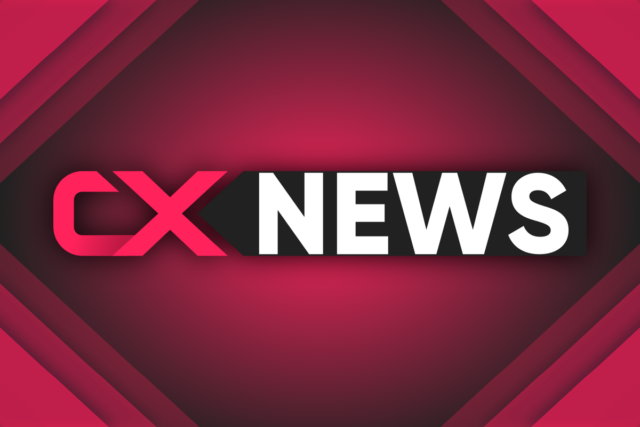September 25, 2025
The Employee Onboarding Experience: Building ROI from Day One

The employee onboarding experience isn’t just a box to tick on day one. It’s when new hires start to judge whether the culture they heard about in interviews matches what they see in practice. If the experience falls flat, many won’t stick around long enough to settle in. Nearly a third walk away within their first three months.
The truth is, most organizations still struggle here. Studies show that only 12% of companies onboard effectively, and just 52% of new hires are satisfied with their experience. For remote employees, it’s even harder: nearly two-thirds say they start out feeling undertrained and disconnected.
The potential gains are hard to overlook. Organizations that invest in strong onboarding report retention rising by 82 percent, and new hires reaching full productivity in nearly half the time. By 2025, onboarding can’t stop at forms and IT access. It has to give people clarity, confidence, and a sense of connection – wherever they’re working, in an office, at home, or somewhere in between.
The Evolution of the Employee Onboarding Experience
For years, onboarding just meant getting the admin out of the way. Sign the forms. Sit through health and safety. Collect your ID badge. If you were lucky, a manager might take you to lunch.
That was onboarding as a process. It covered the rules, but it didn’t answer the questions most people really have on day one: Who am I working with? How do I do this job well? Where do I fit in?
The limits of that model are now obvious. Teams are split across locations. Expectations are higher. Employees are quicker to walk away if the first weeks feel confusing or cold.
In place of the old orientation, businesses are starting to build journeys. Training is broken into smaller pieces. Check-ins with managers and peers become part of the schedule. Technology strips out delays, so that energy goes into people rather than paperwork.
Several patterns stand out. Onboarding today is more personal, shaped around the role and team. It leans on microlearning, not marathons of slides. It’s designed to work whether the hire is remote, hybrid, or in-office. It’s also used to show culture in action – how decisions are made, how feedback is handled, how people are expected to work together.
The Business Benefits of Effective Onboarding
The costs of hiring don’t end when someone accepts the job. By then, managers have spent hours in interviews, recruiters have earned their fee, and HR has pushed the paperwork through. If the hire walks out again inside a few months, the waste is brutal. Money goes. Morale goes. Teams cover the gap while the process starts over.
A structured employee onboarding experience changes the facts.
Retention
Turnover is expensive. Everyone knows it, but the scale is still shocking: replacing a single employee can cost half to twice their annual salary. Programs that guide people through the first 90 days cut that risk dramatically. Research shows new hires in structured programs are 58% more likely to stay for at least three years. That’s experience and knowledge kept in-house instead of lost to a competitor.
Productivity
Ask a manager when a hire becomes useful and you’ll hear very different answers; sometimes it takes weeks or months. The gap often comes down to onboarding. Companies with strong programs report new hires are 50% more productive in their first months. The difference comes from clear systems, clear people to go to for help, and clear expectations.
Engagement
Enthusiasm is fragile in the early days. A lonely, confusing start kills it quickly. A supportive one does the opposite. Gallup has shown the impact for years: engaged employees bring a 23% lift in profitability and cut turnover by 43%. The new hire experience is often the first moment when engagement is either built or broken.
Efficiency
HR feels the strain when onboarding is clumsy. Forms pile up, IT tickets go missing, and managers complain. Automating the basics helps. At HiPages, trimming away manual admin cut the workload by around 30%. HR could focus on people rather than process.
Customer Impact
The benefits aren’t just internal. Best Buy once tracked engagement against sales. A rise of only 0.1 in engagement scores translated to an extra $100,000 in annual revenue per store. Customers pick up on energy. And that energy often starts on day one.
Setting the Tone for the Employee Onboarding Experience
Culture isn’t built in workshops or printed on posters. For a new hire, culture is whatever happens in front of them. Who takes the time to say hello? How are decisions explained? Is feedback given honestly? The employee onboarding experience is the first and clearest signal of what a company really values.
If the first week is all paperwork and no people, the message is obvious: compliance comes before connection. If managers vanish into meetings, employees see that they aren’t a priority. But when early conversations focus on team rituals, shared goals, and stories about how the company works, people quickly understand what matters. Onboarding is less about telling people the culture and more about showing them.
That’s why leaders need to be involved from day one. Often, they assume HR “owns” onboarding. That’s a mistake. Employees notice whether managers are present. At Microsoft, new hires who had a one-on-one with their manager in the first week were significantly more likely to stay. It’s not the slide deck that makes the difference; it’s a leader taking time to explain priorities, answer questions, and set expectations.
Employee Onboarding Experience: Pre-Boarding as a Retention Lever
The gap between signing a contract and starting the job is dangerous. Candidates get counteroffers. They second-guess the decision. A long silence from their future employer leaves plenty of room for doubt. Pre-boarding closes that gap.
It’s the first chance to prove that the company is ready for them. Sometimes it’s simple, like a quick note from the manager, a team message thread saying hello, or a welcome pack in the post. Small gestures land heavily when someone is still wondering if they made the right move.
Admin matters as much. Nothing kills energy faster than turning up to find there’s no laptop, no system access, and half the paperwork still missing. Pre-boarding is the time to fix those basics. When the first morning runs smoothly, it tells the hire that they’ve joined a company that has its act together.
Payapps offers a good example. Their HR team automated the process so that contracts, forms, and IT requests went out in branded, consistent messages. Equipment was ready. Accounts were active. New employees walked in to find everything working, and most described the start as exciting rather than stressful. A technical fix, but it changed the emotional tone.
The details shift depending on how people work. Remote hires need their kit delivered early and a video call to walk them through the systems. Hybrid workers need both digital access and practical touches like a security pass waiting at reception. In-office employees notice whether the desk is ready, whether colleagues know they’re arriving, and whether anyone stops by to say hello.
Mapping the 90-Day Employee Onboarding Experience
Orientation used to be a one-day affair: a tour of the office, a stack of policies, and a handshake from HR. Most people left more confused than connected. The better model now is a staged journey, usually over 90 days, sometimes longer.
Day 1–7: Belonging and Clarity
The first week is less about performance and more about orientation. New hires need to feel they’ve joined a team that wants them there.
That means a personal welcome from the manager, not just an HR briefing. It means introductions that go beyond job titles. At LinkedIn, on their first day, recruits spend hours in ice-breaking sessions where they can learn about company culture.
A buddy system helps, too. Even a single conversation in the first week makes it easier for people to ask the “small” questions that carry big weight: Which tool do we actually use? What’s the quickest way to get help?
For remote hires, culture has to be made visible through screens, a virtual coffee, a team Slack channel, or recognition posted publicly. Hybrid hires benefit if their first office days anchor around high-value moments like lunches or workshops. In-office hires still want structure: a tour, a ready desk, and a clear sense of who to go to for what.
Day 8–30: Confidence and Competence
After introductions, attention shifts to performance. The second and third weeks are about clarity: What does success look like?
A structured learning plan matters. Short, relevant sessions beat day-long slide decks. A sequence of welcome emails or Slack nudges can guide people through systems at their own pace. The point is to make knowledge accessible without drowning them in detail.
Managers play a bigger role here, too. Early feedback, even on small tasks, helps build confidence. Remote hires might need video walk-throughs of systems; hybrid hires should get documentation they can reference when they’re not in the office; in-office hires learn fastest through shadowing or short workshops. Buddies can be helpful again. For instance, Buffer uses a three-stage buddy system to guide employees through culture, leadership, and role duties.
Day 31–60: Collaboration and Feedback
By the time month two begins, the basics should already feel familiar. The focus shifts from “How do I get this done?” to “How do I get this done with others?”. Collaboration takes centre stage here.
Cross-team projects work well here. They give new hires a chance to meet colleagues beyond their immediate circle and to see how decisions get made. It also reveals where friction lies. Research shows that poor collaboration is a major drain on productivity.
Gaps in tools and communication erode efficiency quickly. Catching those issues early, while people are still forming habits, prevents them from becoming permanent.
Feedback carries as much weight as training. Waiting for the first formal review is too late. Short pulse surveys, a quick word from a manager, or a chat with a buddy give new hires direction. They also give the business an early signal on whether onboarding is working.
The way feedback is delivered differs by work mode. Remote hires need light, regular touchpoints, like quick video calls or instant message check-ins, so they don’t drift. Hybrid employees need balance: feedback in both in-office days and digital spaces. In-office hires benefit from casual, face-to-face feedback moments that feel natural.
Day 61–90: Performance and Commitment
By the third month, onboarding shifts into long-term territory. The focus is less about learning and more about ownership.
Managers should hold career conversations here. What projects will the employee lead? What growth opportunities exist? People want to know they’re not just filling a seat but building a path. Mentoring can help cement that feeling. Pairing new hires with senior colleagues gives them access to guidance beyond their direct manager.
At Microsoft, employees who met their onboarding buddy more than eight times in the first 90 days reported reaching full productivity faster. Almost all of them (97%) said they were up to speed sooner.
The modality still shapes the experience. Remote hires need structured mentoring via video calls. In-office hires can benefit from shadowing, face-to-face mentoring, and chances to present in front of colleagues.
Feedback Loops
Onboarding works both ways. Companies invest heavily in welcoming new staff, but often forget to ask what the experience feels like. When feedback is missing, minor irritations grow into silent problems, the kind that show up later as disengagement or resignations.
Short, simple surveys at 30, 60, and 90 days are enough. The questions don’t need to be complicated: Do you have what you need to succeed?
Regular conversations help too. A manager’s check-in is an obvious point of feedback, but buddies and peers often hear the unfiltered version. Collecting those insights creates a clearer picture of the new hire experience.
Work mode shapes the feedback channel. Remote employees may prefer lightweight digital polls. Hybrid workers can be asked in person and online. In-office employees often respond best to informal, face-to-face chats. The method matters less than the act of listening and showing that changes follow from what people say.
Technology, Automation & Analytics in Onboarding
Admin used to define onboarding. Paper forms. Password requests. Endless email chains between HR and IT. For new hires, it meant wasted time. For HR, it meant days spent chasing signatures instead of building connections.
Technology has started to strip that out. Done well, it makes the employee onboarding experience feel consistent, reliable, and secure.
Automation that clears the path
At HiPages, automating onboarding tasks cuts admin by around 30%. The system handled contracts, forms, and IT requests. HR stopped drowning in paperwork. Managers had more time to spend with their new hires. Employees walked in to find laptops ready and accounts active.
Small efficiencies add up. A workflow in Slack that reminds managers to schedule 1:1s. A system that auto-provisions software based on job role. Each one takes friction away from the first weeks.
Security built in from the start
The convenience of automation comes with risk. Employee records, financial data, and client information are all exposed if access controls slip. That’s why onboarding in 2025 is moving toward “secure by design.”
Zero-trust access models, role-based provisioning, and mandatory phishing awareness training are now standard in leading companies. The aim is to make security invisible to the employee, with accounts ready on day one and permissions aligned to the role, but without open doors that create compliance risks.
Analytics and predictive insight
Technology also provides visibility. Data on manager 1:1s, buddy meetings, training completion, and system logins all show whether onboarding is on track.
Some companies, like Palo Alto Networks, use AI-driven automation to cut IT delays, saving 351,000 hours of employee time. Analytics revealed where new hires were getting stuck, and automation cleared the bottlenecks.
Measuring Employee Onboarding Experience ROI
Onboarding is often treated as a soft skill, a warm welcome, a handshake, maybe a lunch with the team. But the results can be measured, and when they are, the numbers are hard to ignore.
- Retention: Track how many people make it past 90 days, then six months, then a year. If too many leave early, the onboarding process probably isn’t working. It’s a blunt metric, but one that tells the truth.
- Productivity: Watch how long it takes before new hires carry their weight. Strong onboarding cuts weeks, sometimes months. Track how often they stall and need help, too; it shows where the gaps are.
- Satisfaction: Use pulse surveys, manager check-ins, and eNPS to hear how the new hire experience feels. If people say “lost” or “isolated,” then onboarding isn’t working, even if the paperwork is done.
The financial case ties it all together. Retention saves recruitment costs. Productivity adds capacity. Satisfaction and engagement feed into customer outcomes.
Troubleshooting Guide: Common Onboarding Challenges & Fixes
Even the strongest onboarding program stumbles once real people run through it. The same problems show up again and again, but each has a fix.
- Information overload: Too many companies dump everything into week one – forms, presentations, systems. By the end of the week, almost nothing sticks. The fix: spread learning over the first 90 days, with time to practice and revisit.
- Manager disengagement: When leaders vanish and leave HR to run the show, the message is clear: you don’t matter. A single one-to-one in the first week can flip that script. Reminders help, but accountability for managers matters more.
- Remote isolation: Without rituals, remote hires drift. They miss hallway conversations, quick clarifications, and casual introductions. Digital buddy calls, virtual coffee chats, and public recognition in Slack or Teams help bridge that gap.
- Hybrid fairness: Hybrid workers often miss out on whichever side they’re not on. If training or culture moments only happen in person, they’re excluded. If everything defaults to Zoom, office days feel wasted. Document key knowledge, then anchor office days around mentoring, team rituals, and collaboration.
- IT delays: Nothing kills momentum faster than showing up without a laptop or logins. Automated provisioning solves most of this issue if IT and HR align before day one.
- Compliance-only focus: Companies that treat onboarding purely as paperwork make it clear where people sit on the priority list. The solution is balance: complete the admin tasks, but pair them with culture-building, recognition, and performance milestones.
Every one of these problems sends a signal to new hires. Together, they decide whether the employee onboarding experience feels worthwhile.
Employee Onboarding Experience: The Foundation for Success
The first weeks are make-or-break. Get them wrong and you lose people fast, sometimes before they’ve even made a real contribution. Get them right and you buy stability, faster output, and stronger teams.
It doesn’t take grand gestures. It takes the basics, done well. A manager who shows up in week one, a ready desk, a buddy who can answer the questions no handbook ever covers, or a system that works on the first try.
That’s the reality of the employee onboarding experience. It’s not a side project for HR. It’s the first proof of whether the company keeps its promises.
The path for 2025 isn’t complicated: cut the clutter, close the gaps, and make onboarding worth talking about. Retention, performance, engagement, and even customer satisfaction, all trace back to those first weeks.



